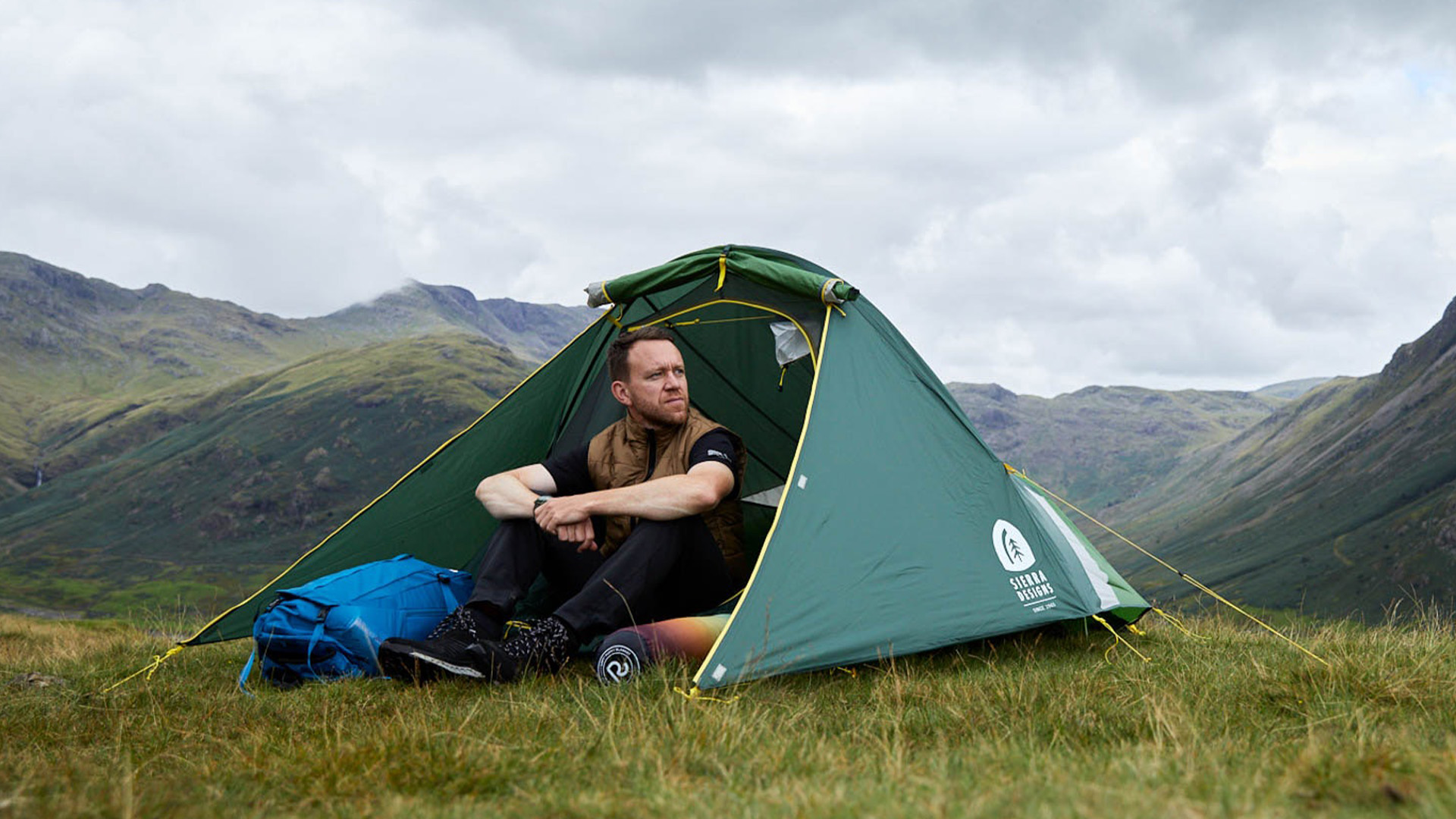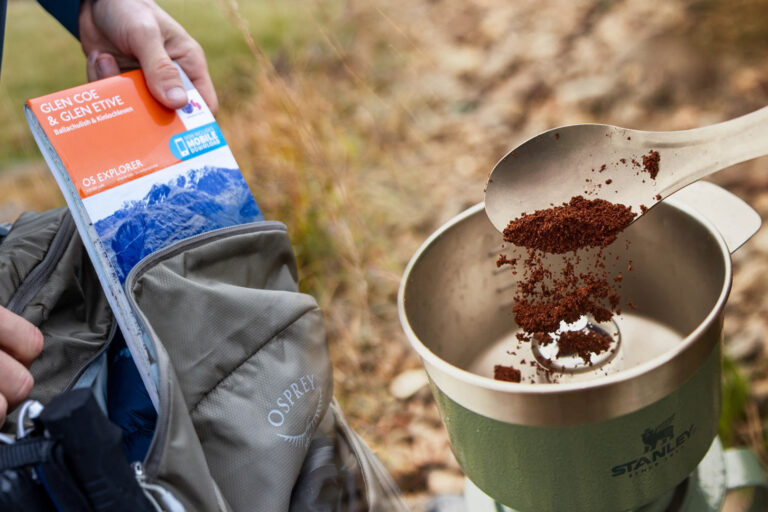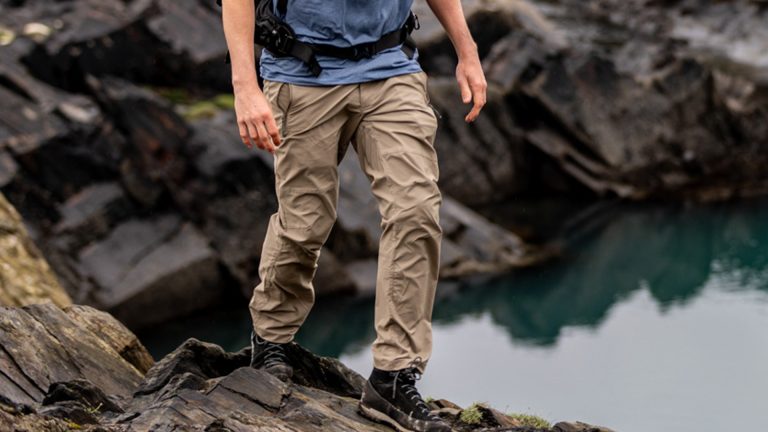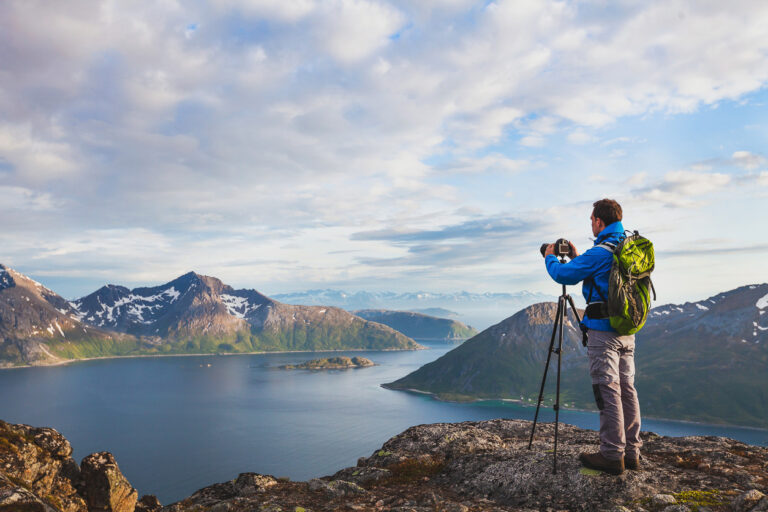If you want to go backpacking but don’t think you can afford a tent that will be good enough for the job, think again. In fact, there are plenty of very good value tents out there that will serve you well without breaking the bank. Granted, most won’t be as ultralight or high spec as some of the top end models, but there are still lots of options that will cover the basics just fine to allow you to achieve your end goal of having a good time in the outdoors.
In this round up, we’ve curated a list of the best budget backpacking tents on the market; options that will offer the best balance of performance, weight and reliability and most importantly, value. All of the designs will cater for two people and their kit and will be suitable for campouts in mild weather from the start of spring through to the end of autumn. All of the products we’ve featured are from brands that we know can be trusted and we’ve only selected options that are below £200, dropping down to as low as £80, so there should be something for everyone.
The Best Value Backpacking Tents: Our Top Picks
Here’s our selection. All of these are two-person and range between 1.5kg and 3kg. We’ve also marked out our pick for the best overall buy.
- Vango Banshee – Best Value Tent Overall
- Wild Country Zephyros Compact 2 – Lightest in the list
- Vango Soul 200 – Cheapest two person tent in the list
- Forclaz Trekking Tarp Tent – Best Budget Tarp Tent
- Forclaz MT500
- Sierra Designs Clip Flashlight 2
- OEX Phoxx 2
- OEX Rakoon II
- Kelty Wireless 2P
- Robens Boulder 2
Need some advice on choosing a two person tent and what designs, materials and features to look out for? Jump down to the bottom of this article for a quick buyer’s guide or, for something more in-depth, we’ve got you covered with this in-depth hiking tent buyer’s guide. If you need to equip yourself with all the gear, we’ve also covered sleeping mats, three-season sleeping bags and camping stoves.
1. Vango Banshee 200
Our pick for the best value tent overall
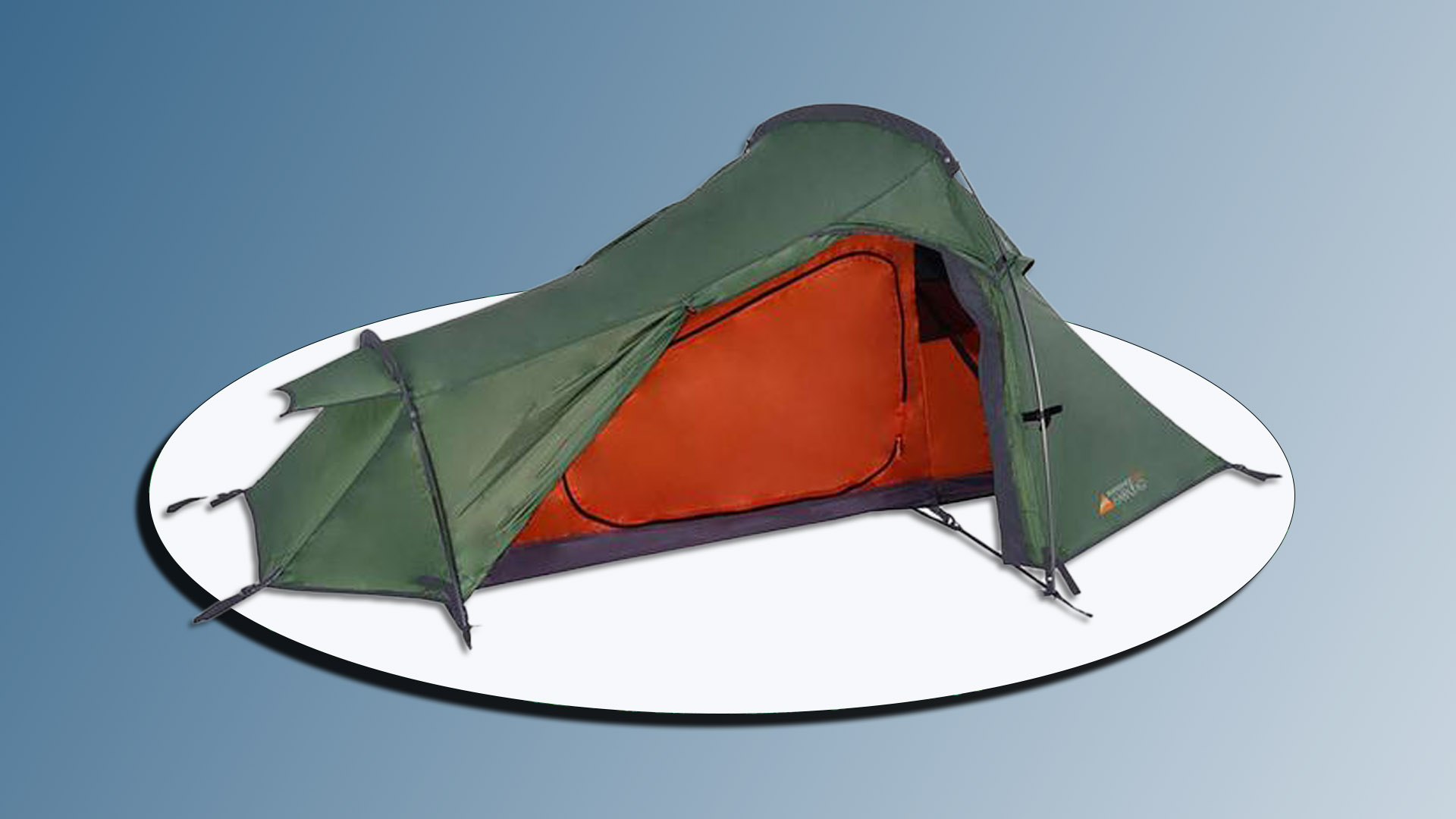
Price: £125
Weight: 2.4kg
Pros: stable, durable, excellent value
Cons: porch space is quite small
The Vango Banshee has become a bit of a cult classic. It’s a tent that, for a number of years now, has been a go-to entry-level tent for hikers. You could call it a ‘gateway’ tent but one that a lot of people actually stick with for a long time, even as they gather up experience.
Its enduring reputation for rugged reliability earns it the top spot in this guide – our pick as the best budget tent overall. As a one person tent, which many people use it for, it has excellent ‘liveabity’ thanks to its reasonably spacious sleeping area, it’s sitting up height and its doors on either side of the flysheet. For two people it’s manageable albeit a bit of a squeeze with loads of kit as the porch space isn’t great. Still, it’ll just about hold two hiking backpacks and two pairs of hiking boots when organised neatly and you can extend it by propping up the tent door with a trekking pole.
Buy the Vango Banshee 200: £145 at Gooutdoors.co.uk
2. Wild Country Zephyros Compact 2
The lightest tent in our list, this is our pick for the budget lightweight tent.
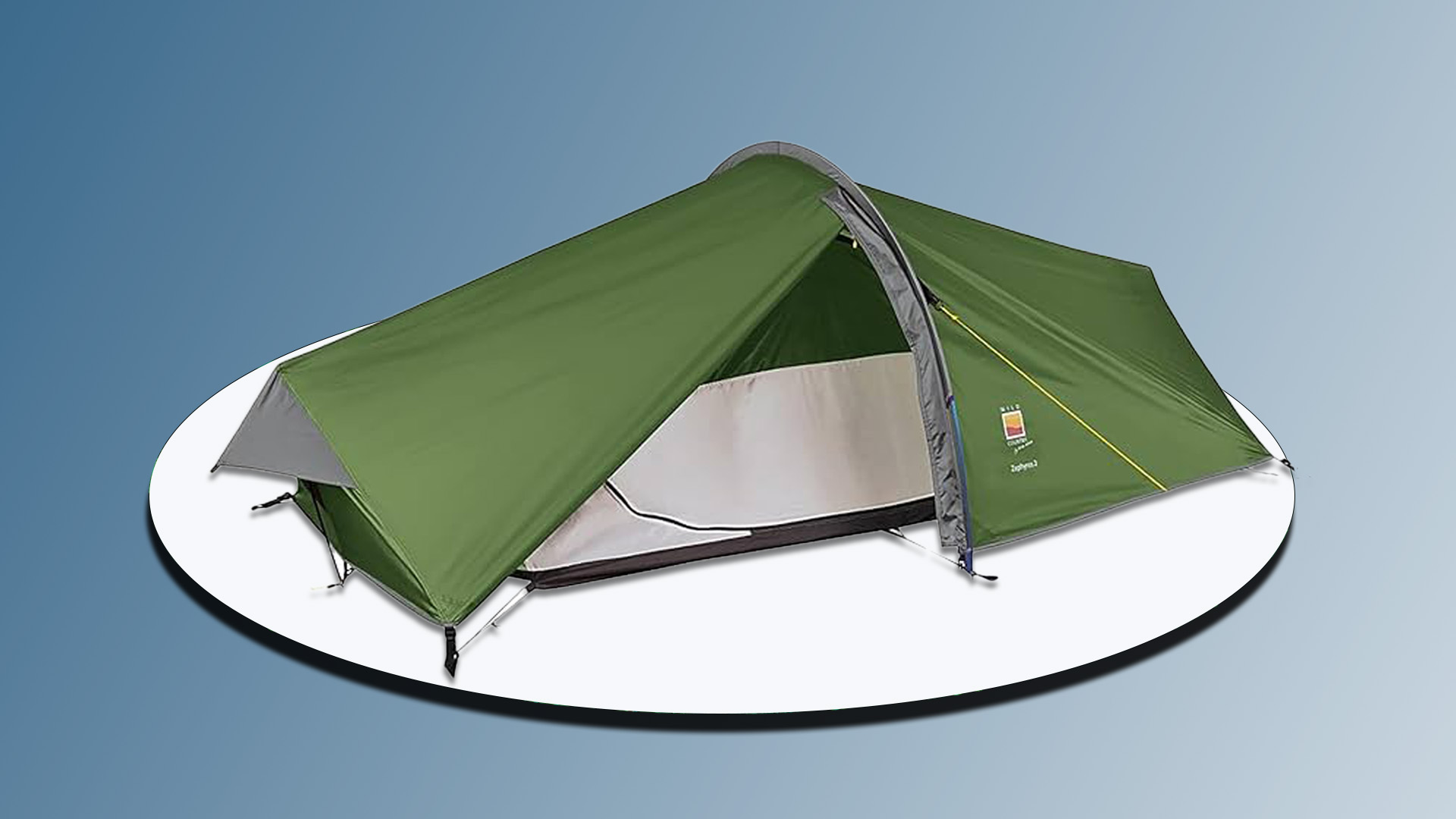
Price: £150 – £260
Weight: 1.94kg
Pros: light, sturdy, good ventilation
Cons: small porch space, at the higher end of the scale in price
Bought new, this costs in the region of £260 but you can get versions of it from the outlet section of the brand’s website for below £150 and, as such, this just about qualifies as a budget tent.
Wild Country have an excellent reputation for their tent designs and this particular model has been hugely popular for a number of years now. It’s a simple tunnel tent with one hooped pole and then two short pole sections at each end. The main pole creates enough space to sit up in this, though the profile is still low and stealthy.
The space-to-weight ratio is decent and it’s good that it has a door on either side so the occupants don’t have to climb over each other. The porch space is OK for your boots or one backpack but that’s about it.
This is outer pitched first and the inner and outer can be pitched together, making for a very fast and easy assembly time.
Buy the Wild Country Zephyros Compact 2: £158 at Amazon.co.uk
3. Vango Soul 200
The cheapest tent in our round-up
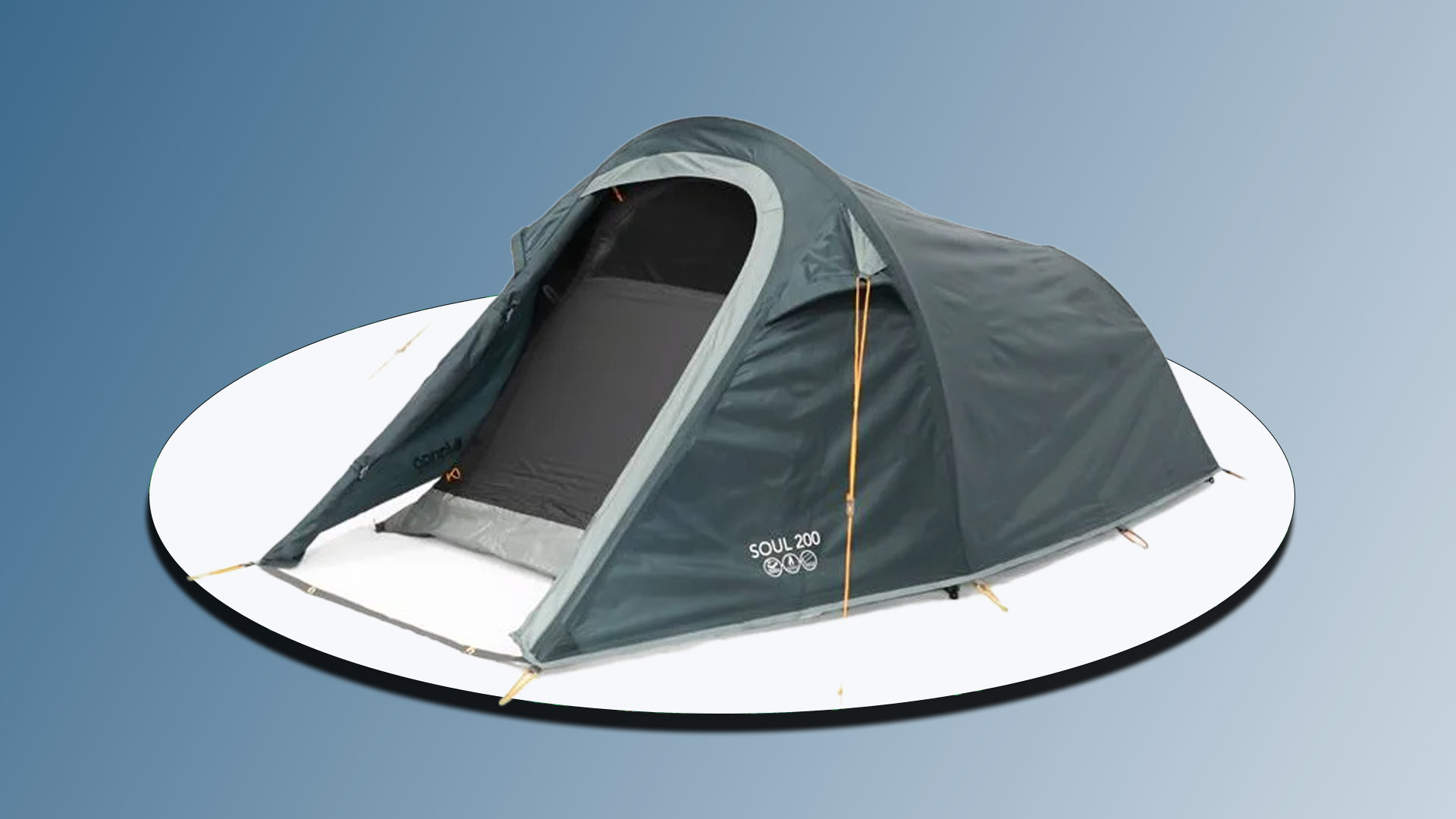
Price: £80
Weight: 2.17kg
Pros: sturdy
Cons: small and narrow porch
Tunnel tent designs like this tend to be reliable options that will hold firm in blustery conditions, particularly when pitched with the lower end facing into the wind.
The porch has its positives and negatives. The positive is that you won’t have to climb over your companion to get in and out. The negatives are that there’s not that much space in it for storing gear or cooking and, in wet conditions, you need to take care to ensure that rain doesn’t drip down into the tent from the top of the porch when the door is open. Still, £80 is pretty decent for a tent that has a good space-to-weight ratio, durable materials and a reliably sturdy design.
Buy the Vango Soul 200: £56 at Ellis-brigham.co.uk
4. Forclaz MT900 Trekking Tarp Tent
This came out of our tests as the best tarp tent for two-person treks

Price: £180
Weight: 1.3kg
Pros: very light, easy to pitch, two porches, good sustainability efforts
Cons: not very subtle and the colour attracts insects
While this Decathlon tarp tent might be at the pricier end of the scale when it comes to budget tents, we still think that £180 represents good value considering its performance levels, it’s excellent space-to-weight and also the sustainability efforts behind it.
When we first received this for review, we were immediately struck by how light and compact it is – especially given that it’s a two-layer design. OK, that doesn’t take into account the two trekking poles you need for it, but those thinking about buying this will probably already tend to hike with poles anyway (or are at least considering taking them jump!)
We found that two standard tapered sleeping mats fit just fine alongside each other in this. It’s a bit tighter with rectangular mats but it’s still doable. You also have a porch on either side, with each one just about the right size for stashing a backpack and boots but not with much room leftover.
All credit to Forclaz/Decathlon for keeping water and energy consumption down by not dyeing the fabrics. It’s a sustainable move but it does come with the drawback that it’s phenomenally bright inside. This might make your items easier to locate inside it at nighttime but it also makes it mercilessly bright once the sun’s up. It’s less subtle too, of course.
Buy the Forclaz MT900: £180 at Decathlon.co.uk
5. Forclaz MT500
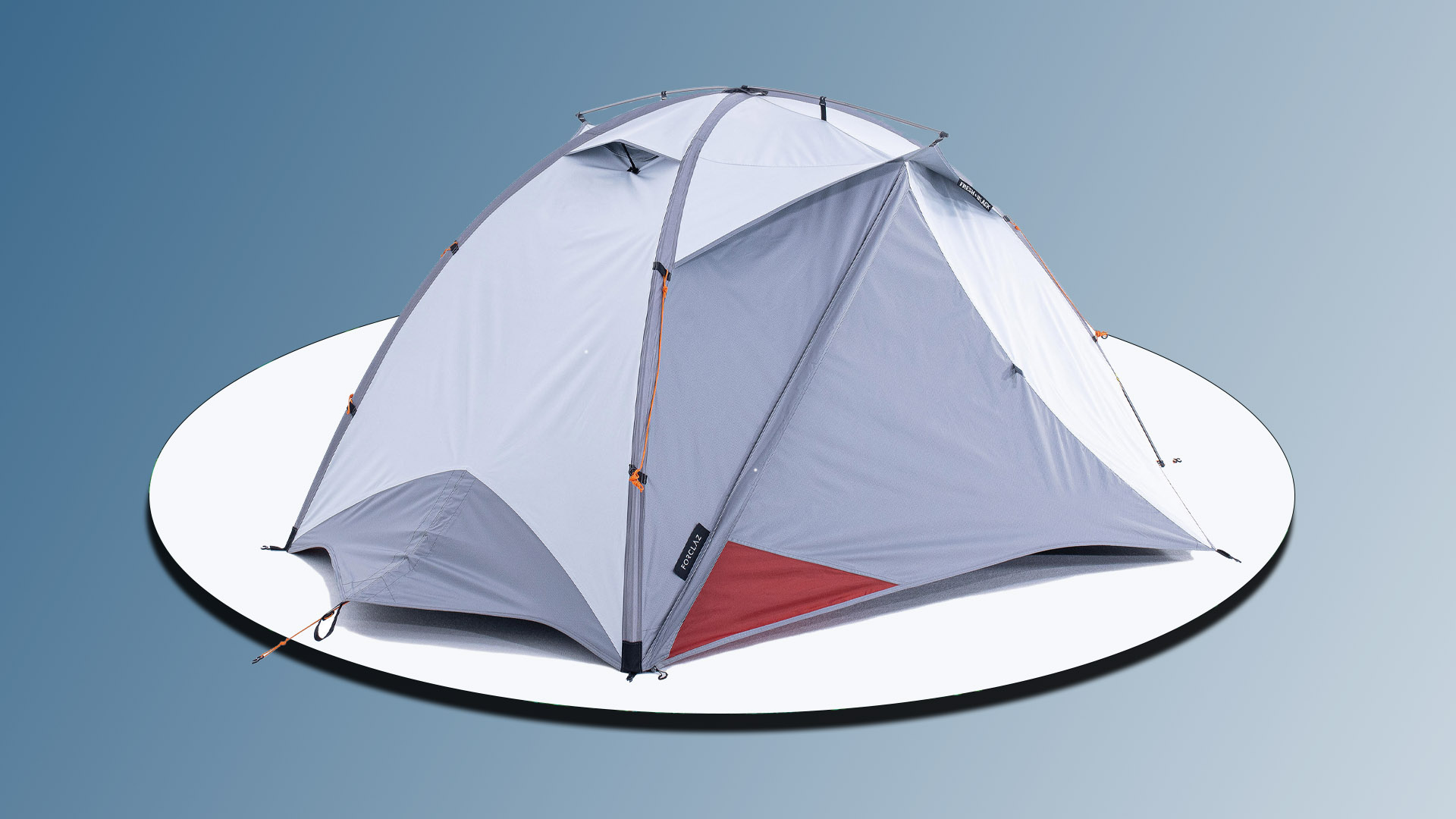
Price: £119
Weight: 2.85g
Pros: very spacious
Cons: heavy
Just short of 3kg, this is a little on the heavy side, but that’s partly to do with the amount of space you get in this thing. With a 210 x 120cm sleeping area, high ceiling that leaves plenty of sitting up space and reasonably sized porches on either side, this tent offers plenty of space to relax, cook and stow kit.
Dome designs such as this have good rigidity in the wind and they have the added benefit of being freestanding. This makes them easier to pitch on rocky or sandy surfaces that are difficult to peg into. An extra short pole across the top adds that bit of extra space to each porch.
The outer and inner can be pitched together. That’s a handy attribute in somewhere like the UK where you want to ensure the inner tent is never exposed to any moisture while you’re pitching or packing up.
Decathlon recommend using an extra groundsheet with this, but if you’re careful enough with what you’re laying the tent onto (ie. not on brambles or sharp twigs) then this shouldn’t be necessary.
Buy the Forclaz MT500: £130 at Decathlon.co.uk
6. Sierra Designs Clip Flashlight 2

Price: £200
Weight: 2kg
Pros: sturdy, good weatherproofing
Cons: narrow door way
Sierra Designs might be an American brand but with this particular model, they’ve designed it specifically to cope with the kind of conditions campers tend to face in northern Europe. They’ve upped the hydrostatic head, for example, and they’ve also increased the overall durability of the materials.
It’s a tent we rate highly here at Outdoors Magic – in fact, we included it in our Green Gear Guide a couple of years ago. A two-pole tunnel design, it proved sturdy and reliable in our tests and it was quick and easy to pitch. The fact it is inner pitched first might be a drawback for some (or a boon for those who like a tent they can stargaze in on dry nights). It’s also not freestanding. Still, it offers one large porch and plenty of room for people to sleep comfortably alongside each other and it even comes with a little mesh bag that you can stick a head torch in to create a makeshift lantern. The stuff sack deserves a mention too; we found it’s design made the pack-away process smooth and stressless.
Buy the Sierra Designs Clip Flashlight 2: £200 at Ultralightoutdoorgear.co.uk
7. OEX Phoxx 2
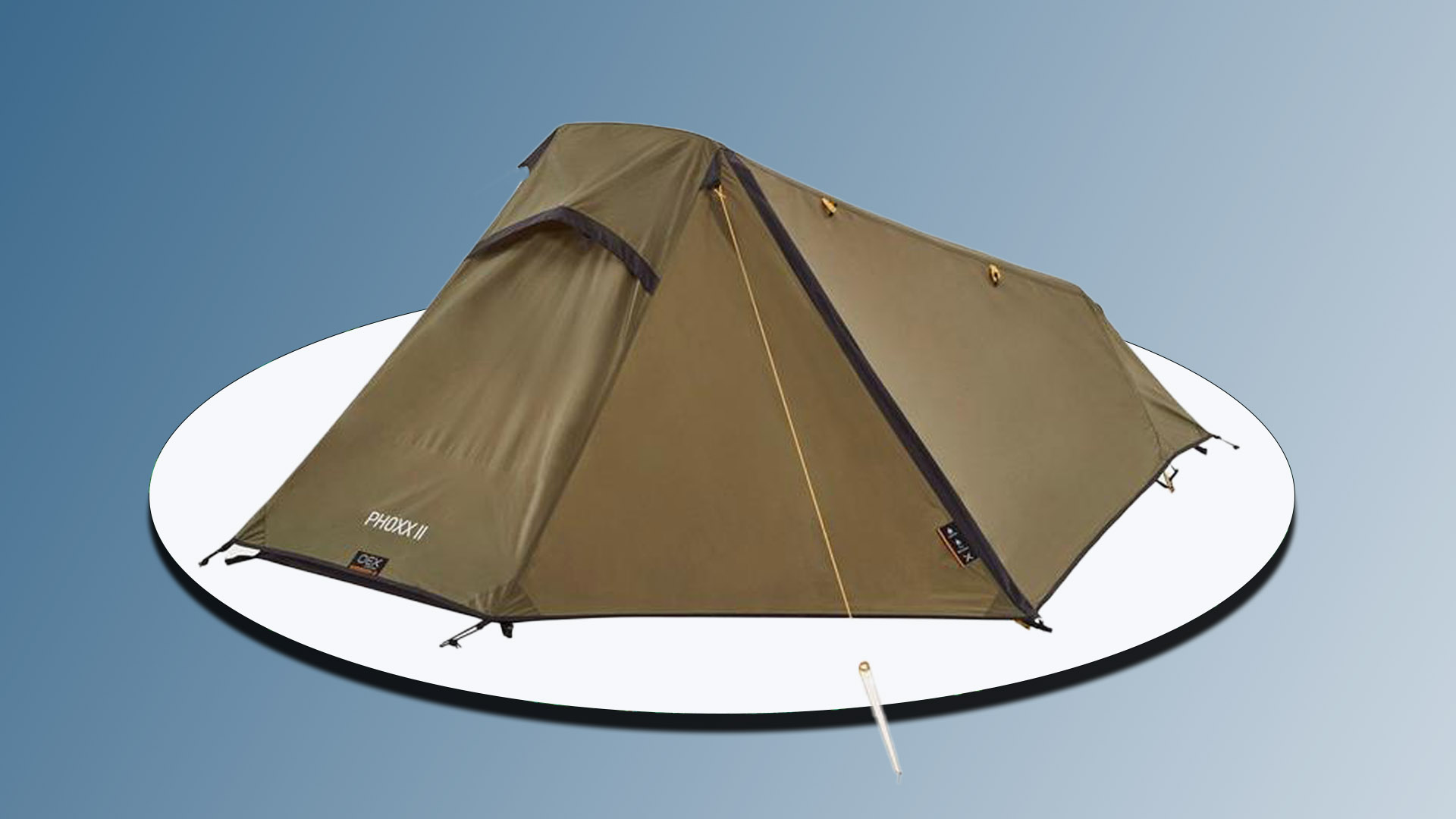
Price: £99
Weight: 2.1kg
Pros: stealthy design, low cost
Cons: not much liveability
This tent’s main strength is in its low profile. This means it won’t sway about in strong winds and it will also provide a degree of stealthiness for those who like to camp with subtlety. This strength is also a weakness to some extent as it doesn’t offer much headroom. There’s enough height to allow you to prop yourself up on an elbow but most people will find that their head touches the top of the inner when they’re fully sat up.
There are doors with porches on either side. Said porches are quite small; they’ll just about fit a 50-litre backpack and boots but you won’t be left with much room for cooking or for climbing in and out of the tent unobstructed.
This is another tent that pitches inner first, so pitching it in the rain could lead to the inner getting wet.
While this is designed for two people, it’s a tight squeeze and with that in mind, those who like a bit of space to live and sleep might want to treat this as a one-person tent rather than a two-person one.
Buy the OEX Phoxx 2: £75 at Gooutdoors.co.uk
8. OEX Rakoon II
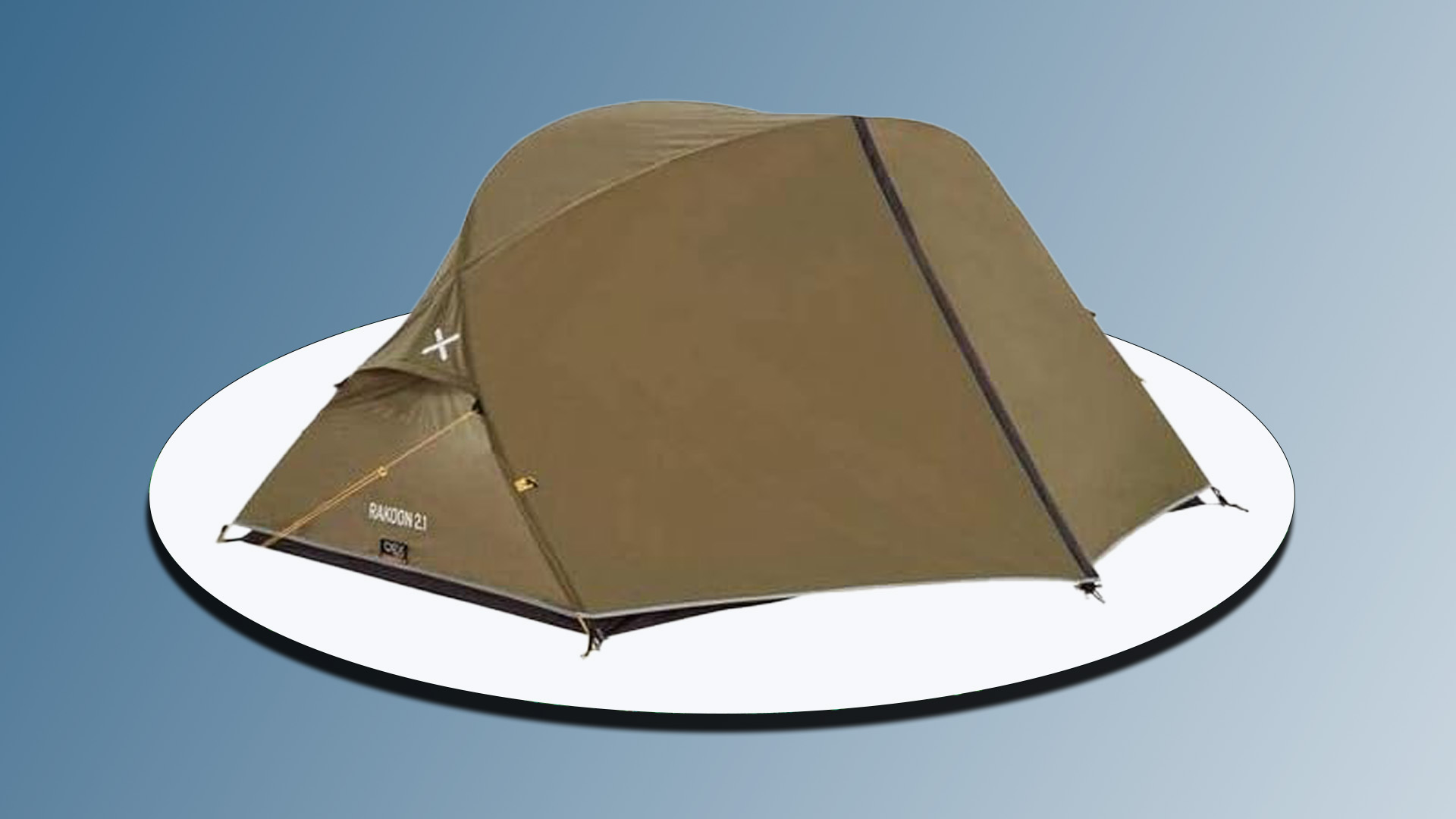
Price: £135
Weight: 2.76kg
Pros: spacious and comfortable, large porches
Cons: quite heavy, not the easiest to pitch
The two poles that cross at two points make this a relatively sturdy tent for three-season camps and its high ceilings, steep sides and reasonably large porches on either side make it comfortable for two people to sleep, cook and relax in.
With this tent, you don’t have to negotiate the poles through sleeves. Instead, the inner is fixed to the poles via little hooks and eyelets. This creates a freestanding structure that the flysheet is then fixed onto. That’s the part of the pitching process that gets a bit fiddly as you need to tie little bits of cord onto the poles to ensure the flysheet lines up properly.
Buy the OEX Rakoon 2: £109 at Gooutdoors.co.uk
9. Kelty Wireless 2P
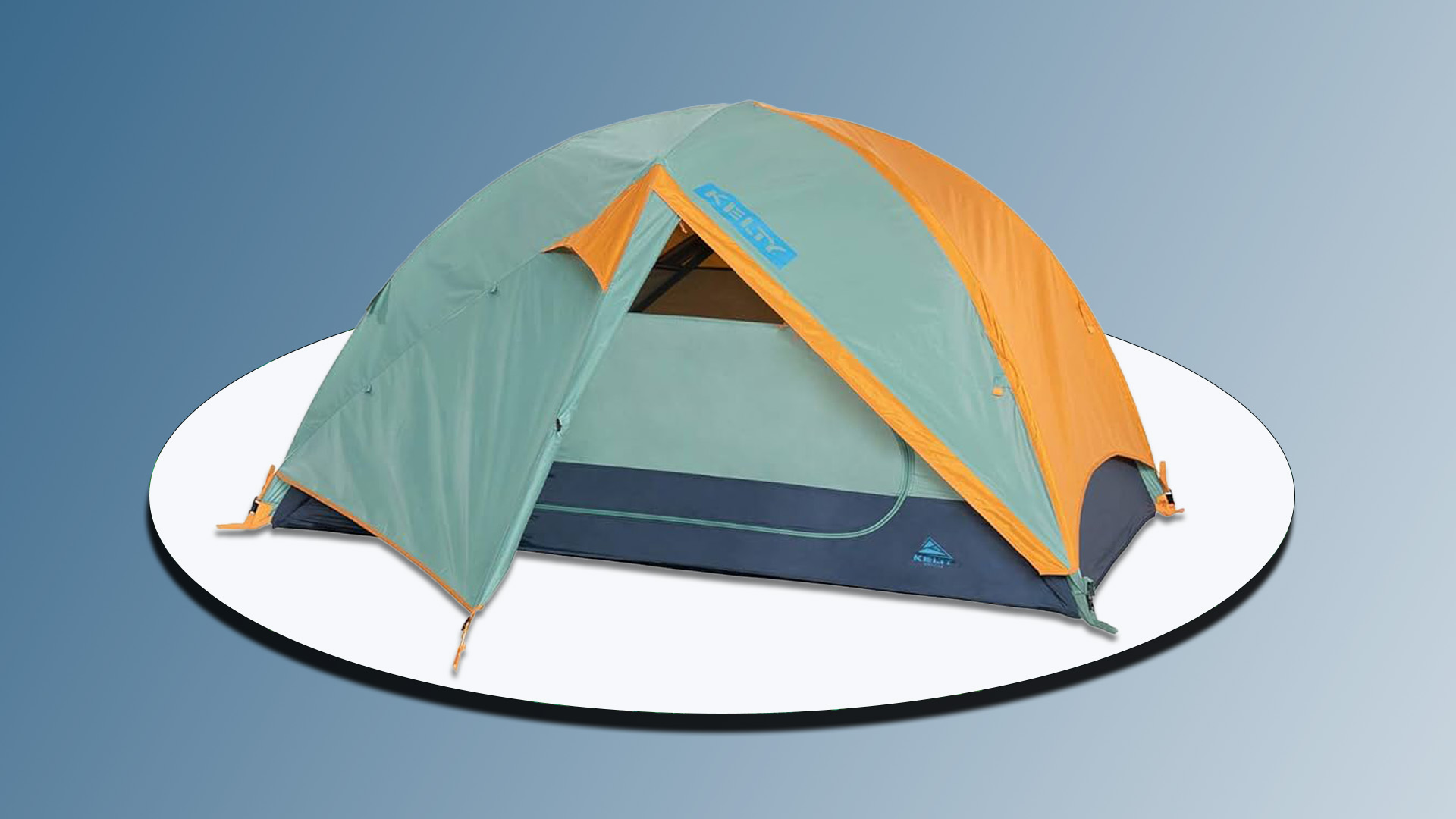
Price: £150
Weight: 3.31kg
Pros: spacious, easy to pitch, big porches
Cons: heavy, material quality not great
This is a good value tent that has loads of space for two people and their kit. It’s also incredibly easy to pitch thanks to its wide pole sleeve, easy-clip corners and colour coordination. It has a large porch on either side, good ventilation and fun night light pockets that diffuse the light of a head torch to create a nice glow. It’s freestanding and can be used without the flysheet on dry nights. The translucent fabrics that go from the ground to half way up the inner also create a level of privacy when this is used without the flysheet.
The main downside to this is that the poles are made from a flimsy fibre glass and there’s a risk of them breaking in strong winds.
Buy the Kelty Wireless 2P: £125 at Amazon.co.uk
10. Robens Boulder 2

Price: £180
Weight: 2.4kg
Pros: good materials, good space to weight
Cons: small stuff sack
This has a very similar design and the same traits as the Kelty Wireless 2P. Aside from the gap in price, the big difference between them, however, lies in their materials because the Robens Boulder 2 uses much higher spec fabrics and poles. As such, this tent has much more durability and reliability in strong winds and it’s also quite a bit lighter.
If you’re a casual camper who’ll be pitching at low levels in calm conditions then the Kelty would be fine for you, but if you want something a bit more technical, durable and reliable then it’d be worth investing in the Robens Boulder instead.
Buy the Robens Boulder 2: £163 at Robens.de
What to Look for When Buying a Backpacking Tent on a Budget
Backpacking tents generally can be defined as two-person options that are lightweight but also convenient and comfortable enough to live in for multiple days. Generally they are made for three season use – that’s for milder days between the start of spring and the end of autumn. Here are some things to look for when you’re looking for one.
Space to Weight Ratio
It’s always worth looking for tents that are light but also comfortable for two people to live and sleep alongside each other. In terms of weight, obviously what’s heavy to one person might be light to another, but generally speaking, the good models tend to come in below 2.5kg and the very good models will come in below 2 kilograms.
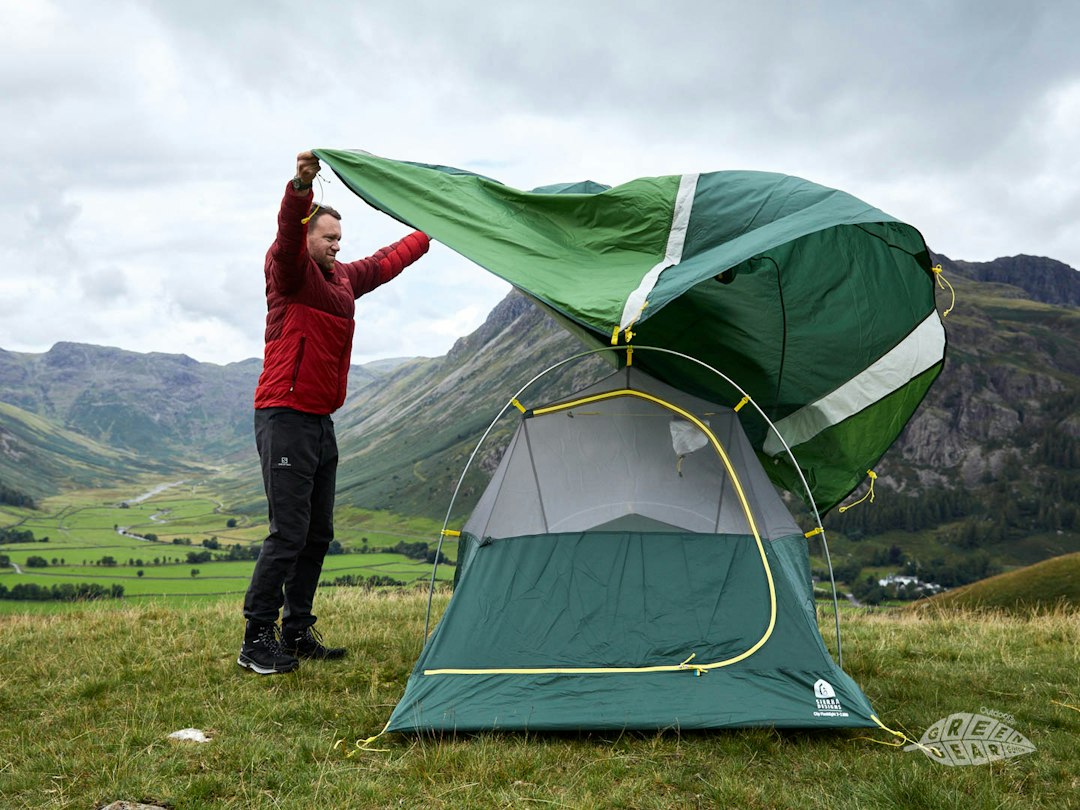
In terms of space, for backpacking, look for tents with enough porch space for two backpacks and two pairs of boots. It’s a bonus if there’s room in the porch to allow you to use your backpacking stove within its shelter – with adequate ventilation, of course. Most tent brands will give a measurement of the length, width and height of the inside of the tent and it’s worth checking that the dimensions will be OK for the dimensions of your two sleeping mats and also for the two people that will be lying on them!
Fabrics
The balance between durability and weight is another important thing to strike. Usually, tent flysheets and groundsheets will have a strength rating between 15 deniers and 70 deniers and, generally speaking, the lower the denier rating, the lighter the tent will be. Nylon and polyester are the most common tent fabrics, especially with budget tents. Polyester stretches less when wet compared to nylon but polyester isn’t quite as strong as nylon.

Check for the coatings that are used too; silicone-coated fabrics are light and durable while PU-coated ones are heavier for the same strength but cost less. Most budget tents will use a PU coated polyester, but if you find a good value tent with silicone coated nylon, you’re onto a winner.
Poles
Low budget tents will often have fibreglass poles. Fibreglass is cheap, relatively light and flexible, but it can break quite easily. Our recommendation is to look for a budget tent that has aluminium poles as they’ll tend to be tougher and more reliable. It’s very rare to find a budget tent with carbon fibre poles, but if you do – again, you’re onto a winner.
Design and Durability
Most backpacking tents are made with three-season conditions in mind. This means they are specifically engineered to provide adequate protection and comfort in mild weather conditions but may not be well-suited for harsh winter conditions or heavy snowfall. While there is no specific standard for wind resistance in three-season tents, they are typically engineered to handle winds up to around 30 to 40 miles per hour (48 to 64 kilometers per hour).

As you’ll see in this article, tunnel tent designs are common when it comes to budget backpacking tents. This is arguably due to their relatively simple construction and the cost-effectiveness of materials used. While tunnel tents can offer excellent space-to-weight ratios and ventilation, they may not be as freestanding or stable as more complex designs like domes.
Dome-style tents tend to bring reliable stability, making them resistant to windy conditions and, with a freestanding design, they’re easy to set up and relocate. Their sloping walls maximise interior space efficiently, and the simple structure usually makes for a quick and hassle-free setup.
How to Get Good Value From Your Tent
Exposure to the sun can take a toll on tents, leading to fading of colours, material degradation, and reduced waterproofing. The ultraviolet rays from the sun may cause synthetic fabrics to become brittle, affecting their strength and water resistance and the heat generated by intense sunlight can weaken zippers and seams, potentially compromising the tent’s integrity. To ensure your tent lasts a long time and performs as you need it to it’s a good idea to choose tents with UV-resistant coatings, store them away from direct sunlight when not in use and to conduct regular maintenance. Here’s a video we put together that demonstrates exactly how you can care for your tent.

